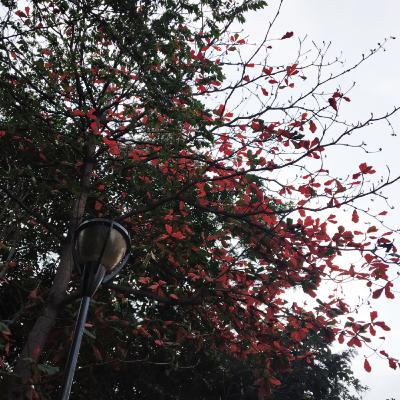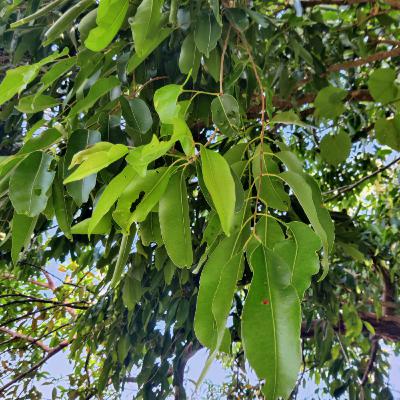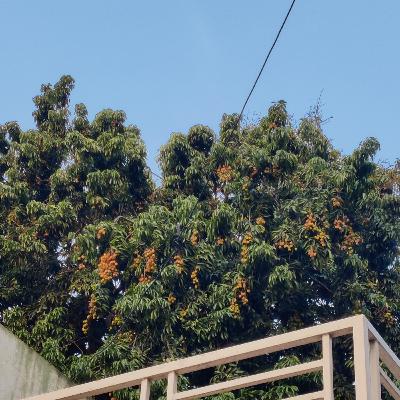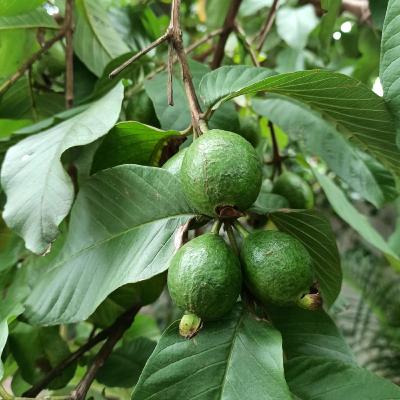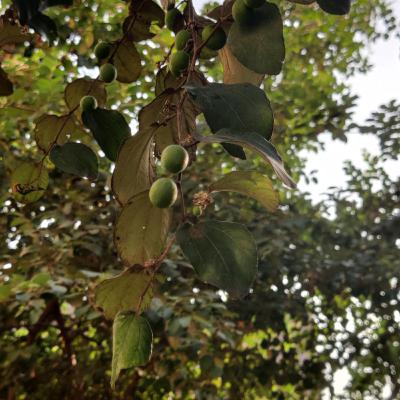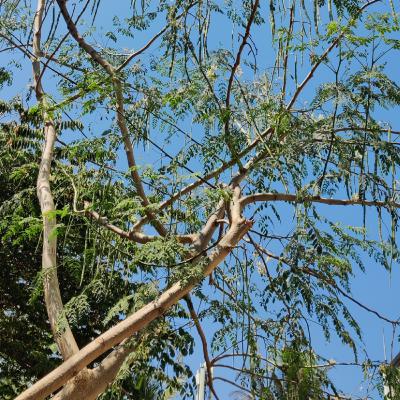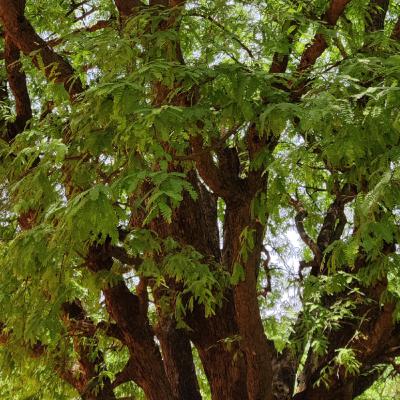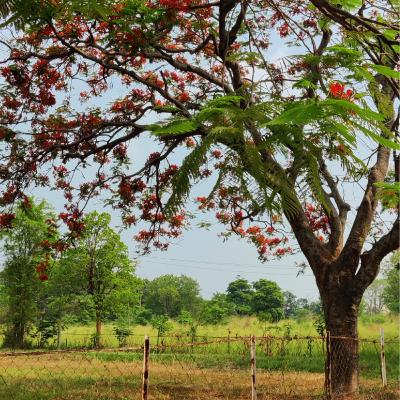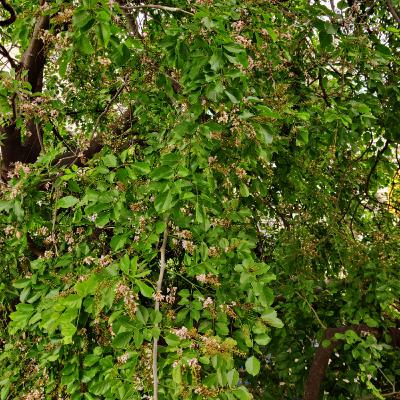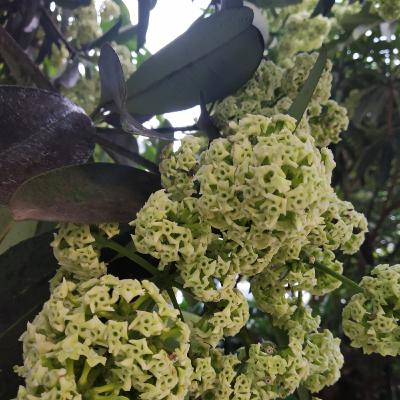Discover A Year with Trees
A Year with Trees

A Year with Trees
Author: Fatima
Subscribed: 2Played: 30Subscribe
Share
© Fatima
Description
Hello everyone! Welcome to *A Year with Trees* podcast. I am Fatima, the host of this show. Trees are one of my favourite beings in nature, and I enjoy learning about them. There are not many podcasts that talk about trees, so I started this show to spread awareness about some common Indian trees. Every week, I share my stories related to the tree of the week, describe it to you in detail, and then help you with keys to identify it in the wild. So come along with me, let's explore the beautiful world of trees.
Enjoy and do follow and share!
Blog: https://ayearwithtreespodcast.wordpress.com
Enjoy and do follow and share!
Blog: https://ayearwithtreespodcast.wordpress.com
18 Episodes
Reverse
If there is a tree that truly represents India, it is Peepal. From as far back in time as the Indus Valley Civilization, pottery has been excavated with designs featuring leaves of the Peepal tree. It is a common tree in India, known for its beautiful heart-shaped leaves.
I am talking about the terms plant blind and plant aware today because the tree which I am going to talk about today made me realise how even ardent tree watchers like me can become plant blind sometimes, but great trees like good friends drag us back to focus. Today's tree is the Indian Almond Tree, and before I discuss it in detail, let me recount to you my story about this tree.
Kids and parrots have much in common. Not only can they chatter incessantly all day long, but they love the same kind of fruits, too. These fruits have soft skin or flesh and are sweet or tangy. So among their favourites, guavas, mangoes and lychees, is a purple sweet-sour berry-like fruit called Jamun .The tree is very common, yet I have met many people who find it difficult to identify it. So, in this episode, I will help you with distinct keys that you can use to easily know your jamun trees.
While strawberry trees don't have strawberry-like fruits hanging from them, the berries that do hang from them are equally beautiful, particularly when a tree is full of red and green berries. Let me tell you how I came across this tree for the first time, and then I will dive into all the cool botanical stuff related to it.
The atrocious summer heat in India is welcome if it means a sweeter yield of two of my favourite fruits, namely, mango and lychee. I have already made an episode on mangoes in which I have poured my heart out, so if you love mangoes too, do check it out. And, today's episode is all about lychee.
This tree is not native to India. Yet, it is impossible to imagine a garden or a park in India without at least one specimen of this tree. A fruit market is incomplete without a mound of its fruit. This is Guava, the tree with pastel green fruit that Indians love to eat in summer with a dash of salt and chilli powder. Listen all about it and more!
If there is a tree that could be as precious as a gem, then it is Mahua. When the cream-coloured flowers of mahua shower down at dawn during Spring, people from villages flock to the forests and collect them in huge heaps. They consume, store, and sell these precious flowers. Many rural households depend on these forest trees for sustenance and livelihood. I will talk about it all in detail in today's episode.
If I tell you that the tree in the spotlight today belongs to the citrus family and its fruit is used to make a delicious summer drink, your answer might be lemon. While it's quite close to the correct answer as the green round fruit does look like a lemon, this fruit is much larger and more sweetly fragrant. It's called Bael tree.
https://ayearwithtreespodcast.wordpress.com
The tree in focus today is a favourite hang-out for frugivore songbirds. Not only do they enjoy its orange-red berries, but they also build nests in its branches or simply gather to socialise before calling it a day. This bird-friendly tree is the Ber Tree or Indian Jujube.
Sal is the state tree of Jharkhand. And, rightly so, as a vast expanse of these trees cover the land. Jharkhand literally translates to the Land of Forests, and sal dominates the landscape. Listen about this tree in today's show.
If you are a gardener, then perhaps you have heard of neem oil and neem cakes. While these and other neem products have made headlines for their usefulness only in recent decades, Indians have used neem trees for various purposes and revered them for thousands of years. Now that science has brought this tree to the limelight, it's popular all over the world. So, neem is our tree of the week.
The star of today's episode is a well-known Indian tree. The Moringa Tree. In India, our ancestors knew about its benefits and included its parts in their diet. Now, even science approves its nutritional and medicinal uses. Various research on this tree have made it popular in the past few decades and around the world it is marketed as a "superfood" and is sold as powder, capsules and whatnots. While I cannot tell for sure how effective packaged products are, I can tell for sure that the fresh parts of this tree are indeed super food, as we will see.
Tamarind tree is well known to most of the Indians, and yet there are so many interesting facts and historical info that one may not be aware of. Listen to this episode about this handsome tree, my story related to it and so much more!
Gulmohar is widely planted in India as a shade and ornamental tree. Its flowers are vibrant and catch the eyes - that grow only during summer season. Many Indians can relate to a hot summer day - when standing in their balcony, terrace or window, they have had a bright view of Gulmohar and the mellifluous song of Asian Koel serenaded the air.
Here is a tree that almost every Indian have sweet memories of childhood with - Mango. Either playing under its boughs or eating juicy sweet mangoes during summer vacations, we all love this tree and its fruits. Do listen and enjoy. And, relive your childhood stories with this beautiful, homely tree.
This tree is my forest. It is a special tree as it's a neighbour that keeps north side of our house cool and shaded and it's a biodiversity hotspot throughout the year - a great way to spend free afternoons looking out of the window at this tree and it's visitors and habitants. Enjoy today's episode and learn more by visiting the sister blog for images, infographics, transcript and more -
https://ayearwithtreespodcast.wordpress.com
Today I am sharing a story of a jackfruit tree that I loved dearly but lost soon after meeting it because it was cut down to clear the land.
Listen to what I have to say and then learn more about this charming tree and meet it in your next walk outside!
In today's episode, I will share my first encounter with the tree - Alstonia scholaris or the Blackboard Tree or as it's called Saptaparni in Hindi. I will walk you through the features of this tree and help you identify it in your next walk in the park or even sidewalks. Thanks for listening and please follow and spread the love for trees!



